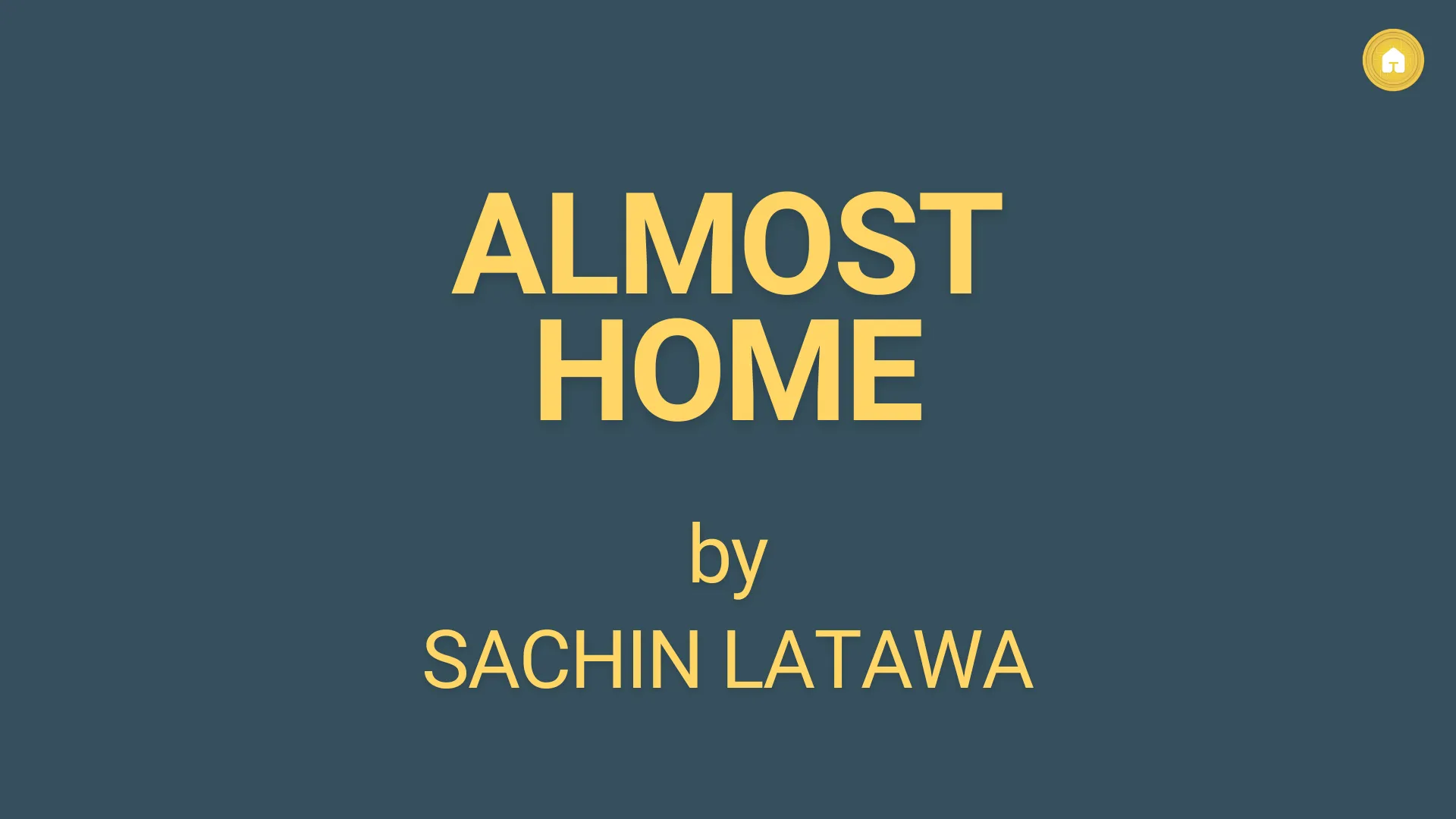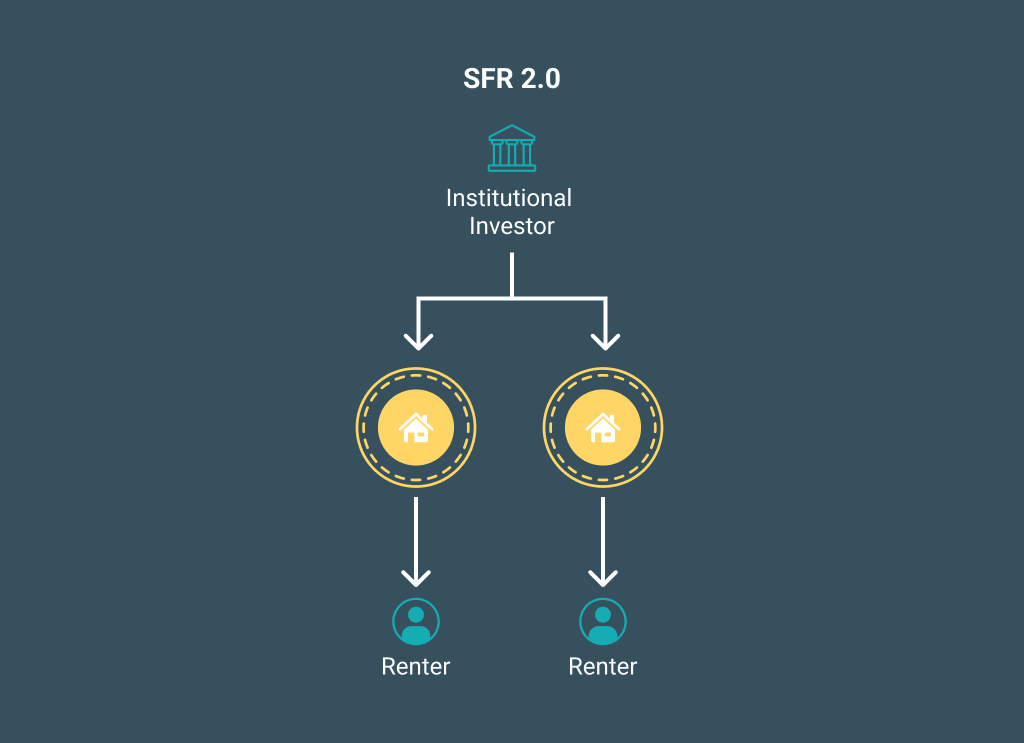
Homeownership has long been considered a pillar of the American dream. Today, it feels exhausting for most individuals to spend their entire lives chasing this dream while being turned down every step of the way for one reason or another.
The never-ending list of reasons includes the shortage of homes, with fewer homes built in the last decade than in any of the previous five decades, the lock-in effect of mortgages with fewer resale homes coming to the market, home prices increasing faster than the increase in wages, lack of savings to afford a down payment for first-time homeowners, highest student debt in history and uncertainty in the job market where a typical millennial expects to hold 12 jobs in their career.
The reason for chasing homeownership, which is well justified, is primarily financial. According to a Federal Reserve study, homeowners have a median net worth of $255,000, while renters have a net worth of just $6,300, a difference of 40x. Today, homeownership is the primary driver of the widening wealth gap and is increasing the divide between the haves and the have-nots.
Considering the barriers to home ownership, Single-Family Rental (“SFR”) homes play an essential part in modern society. Rental homes, separate from apartments, offer solutions to the diverse needs of individuals, whether renting is by choice or by necessity.

Renting as a concept can be traced back to medieval times. Primitive forms of leasing land, farms, and homes existed in each civilization as early as the time itself. The idea of rental homes in the United States became mainstream during the Great Depression and post-World War II.
Historically, when a family upgraded to a new home, those who could afford to buy a new home without selling the current one kept the first home and turned it into a rental. This turned out to be a great source of passive income and helped them double up on the financial benefits of homeownership.
Only a tiny fraction of individuals actively searched for and bought homes specifically for passive investments or rentals. In the early days, most of these rental homes were located in the same city as the owner.
Coming into 2024, these mom-and-pop landlords still own approximately 87% of Single-Family Rentals in the country.

The aftermath of financial crises attracted institutional investors to this asset class. The decline in home prices combined with a zero-interest rate policy meant that rental yields on SFR offered an instant 300 basis point plus return with significant room for appreciation.
Institutions could lock in interest rates for 7 to 10 years on mortgages, which provided a bond-like proxy for downside protection as long as rents didn't drop and a stock-like upside due to possible appreciation in home prices. This combination of risk-return profiles made this asset class very attractive to institutional buyers despite the challenges of managing geographically dispersed assets.
SFR 2.0 led to more homes being purchased by institutions, which was a saving grace at the time. After the 2008 financial crisis, the influx of institutional capital was very much needed to provide housing for millions of individuals facing foreclosures and fill the void of homebuyers in the market due to more strict underwriting rules.
The SFR 2.0 era brought significant non-financial benefits of home ownership to millions, such as the availability of homes in good neighborhoods, spacious living spaces compared to apartments, good schools for kids, and flexibility in the face of job uncertainty. However, it also meant that the financial benefits were concentrated in the hands of a few.
Approximately 13% of Single-Family Rentals are owned by a mix of small, mid-tier, and large institutions. Large institutions, which are categorized as owning more than 1,000 homes, own approximately 2% of SFR. By contrast, institutional investors own approximately 60% of multifamily rental units.

We refer to SFR 3.0 as a movement that encompasses several advancements. The core ideas of SFR 3.0 center around the accessibility of financial rewards from the SFR asset class, which should flow to many rather than a few.
It is not surprising that SFR 3.0 and Web 3.0 share some of the same origin traits, focusing on inclusivity and accessibility. Web 3.0 is a critical part of enabling SFR 3.0.
The financial benefits of the asset class are available to millions rather than concentrated in the hands of a few institutions. Ownership is distributed to include millions of individuals who have been left out of the most impactful wealth-creation tool in the country's history.
For once in the nation's history, the financial benefits of this asset class can be available to EVERYONE. There is no requirement to save for a huge down payment, no requirement for a great credit score or to qualify for a mortgage, and no bias on who is eligible to invest. 10 minutes and $100 is all you need to get started.
Tenants are the customers of the SFR industry. However, there is no other industry where customers feel so ignored, both in terms of customer care and financial benefits. SFR 3.0 provides the opportunity for tenants (customers) to be financially invested in the home where they live. SFR 3.0 also drives more accountability towards customer care; more on "how" in a separate post soon.
We see Web3 and blockchain technology as a pivotal development tool for unlocking SFR 3.0 using tokenization. Looking back to 2008, when the App Store was launched, most successful companies didn't abandon their websites in favor of exclusive App-based offerings. Instead, they embraced a dual-platform approach by maintaining their web presence while expanding into Apps. We see a similar phenomenon here, where users are not likely to abandon their familiar Web2 interfaces overnight. It is not a race to replace Web2, as it is not a path to replace SFR 1.0 or SFR 2.0. With SFR 3.0, we expect a natural progression toward more Web3 adoption over time while ensuring the offerings meet all the regulatory and compliance requirements.
SFR 3.0 is built with a reward program built on Web3 that delivers more personalized experiences and events, offers transparency and rewards the investors, tenants, supporters, fans and invites them to become part of the collective community. What is the importance of SFR 3.0?
The demand for rental homes is expected to grow significantly, partly due to the necessity of affordability getting out of hand and partly due to the younger generation's preference to delay starting a family and becoming a homeowner. SFR 3.0 ensures the availability of rental homes to families looking for this space.
Fractionalization exists all around us. Stocks, ETFs, Commodity indexes, and Crypto are all real-life examples of fractionalization. Still, somehow, when a retail investor hears about fractionalization in real estate, it is made up to sound like a new concept. This is for two primary reasons. - First: Access to fractional real estate investment opportunities has been limited to commercial real estate and restricted to accredited investors in the past. - Second: The real estate ecosystem is built with inefficiencies. When access to fractional investments is available to retail investors, it comes at the expense of high costs, lack of transparency, and improper governance structures, which negates the core benefits of investing in real estate assets. The economics and risks of investing in SFR 3.0 are easy for retail investors to understand. The dividend and appreciation are directly linked to an underlying asset, with no complex construction contracts, renovations, etc. The simple structure, transparent reporting, and regulatory compliance put SFR 3.0 in a unique position to gain retail investors' trust.
As noted in the introduction section, homeownership has created more wealth in the country than anything else. Hundreds if not thousands of programs have been initiated by the Government over the last 50 years to increase homeownership rates, and private companies have tried hundreds of solutions. However, the homeownership rate has stayed between 63% and 66% over the last 58 years, with intermittent spikes to approximately 69% in the early 2000s when we saw subpar underwriting conditions leading to the mortgage crisis in 2008. The reason these programs have failed to make a meaningful increase in homeownership rates is because they circle around the edges of the issue by trying to get an additional few thousand individuals to qualify for a mortgage who would otherwise not be eligible to become homeowners. Although the result for those few thousand homeowners is worth celebrating, the programs fail to address millions who are still far away from being homeowners. The problem is worsening rather than improving, with home affordability at an all-time low and a widening wealth gap between homeowners and renters. It's time we look at the homeownership equation from a different viewpoint. Homeownership provides two fundamental benefits. - First, the non-financial benefit is that it is a utility that provides a roof over the head and a place to stay, rest, raise a family, and be part of a community. - Second, it is a financial asset that provides a better risk-adjusted return than any other asset class in the world. It's time we separated the two. We need to unbundle the financial benefits and make them accessible for all Americans who feel that the notion of homeownership and the American dream is slipping away from them. SFR 3.0 can help us achieve this.
This is just the beginning. As with any new movement, there are challenges with SFR 3.0 that will need to be addressed to advance the core principles.
SFR 3.0 carries forward the non-financial benefits of SFR 1.0 and SFR 2.0 with an opportunity to unlock the power of financial benefits for millions of individuals who feel left out of this powerful wealth-creation tool. The third chapter begins now.